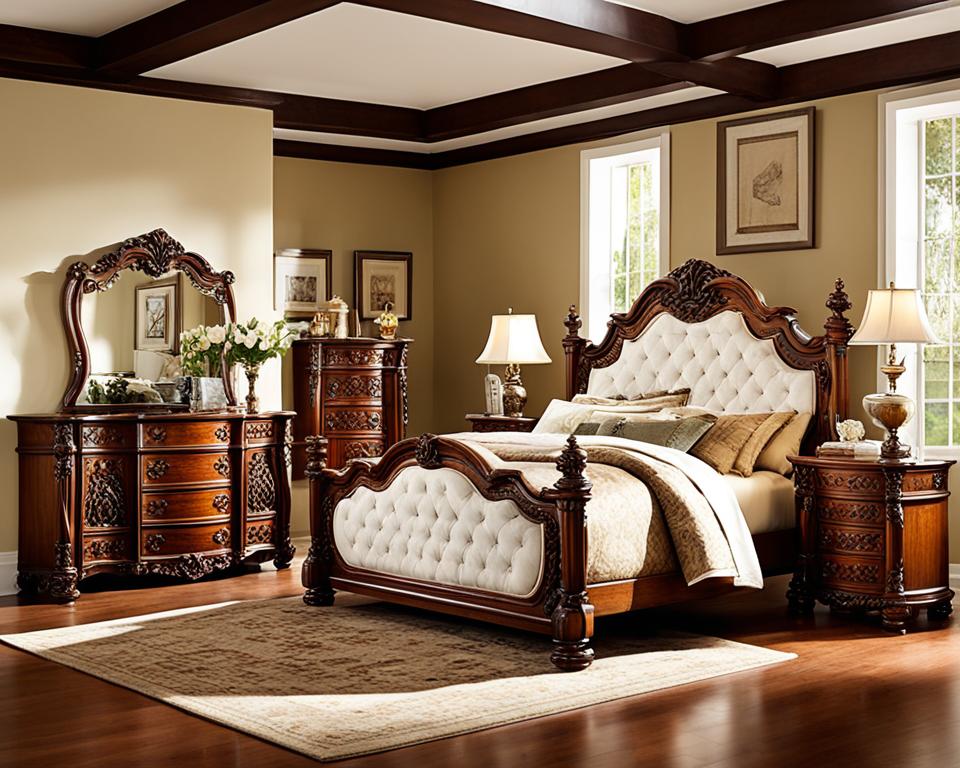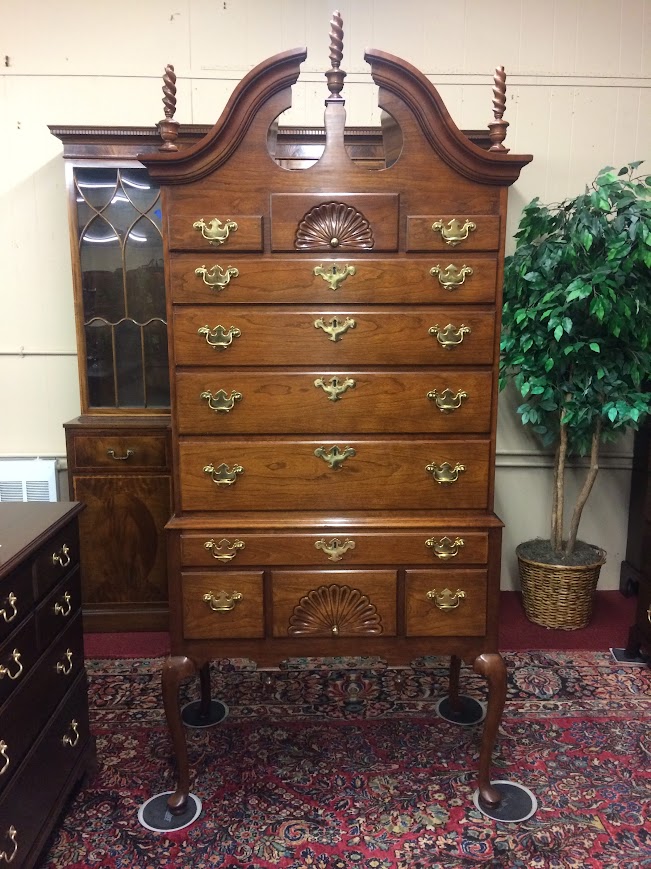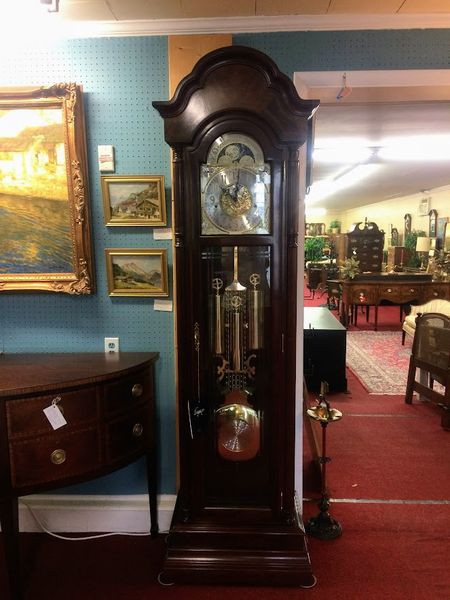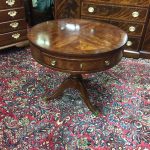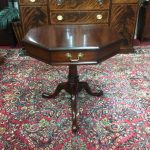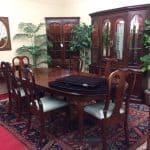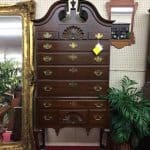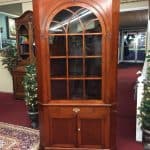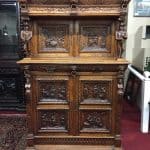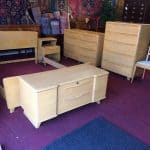Valuing antique furniture can be a challenging task, whether you’re a seasoned collector or an enthusiast just starting out. Determining the worth of antique chairs, antique tables, antique bedroom furniture, and antique dining room furniture requires knowledge and careful examination. In this guide, we will explore essential tips and techniques for valuing, handling, and understanding antique furniture values. Whether you’re an antique restoration aficionado or looking to become an antique collector, this guide will provide you with the necessary insights to navigate the world of antique furniture.
Examine the Furniture
When valuing vintage furniture, it is essential to thoroughly assess its features, materials, and overall condition. By examining these aspects, you can accurately determine its true worth. Here are some key steps to follow when examining vintage furniture:
1. Assess Furniture Features
Take note of distinctive features that make the furniture unique and add value. This could include intricate carvings, ornate details, or specific design elements that are characteristic of a particular era or style.
2. Check for Labels and Markings
Search for any labels, markings, or signatures on the furniture that can provide valuable information about its origin, manufacturer, or designer. Identifying these details can significantly impact its value.
3. Examine Damages and Repairs
Thoroughly inspect the furniture for any damages or repairs. Note any scratches, chips, or missing parts, as well as any signs of restoration or refurbishment. These factors can influence the overall value of the piece.
4. Consider Features and Composition
Take into account the seating capacity, storage options, and material composition of the vintage furniture. These characteristics contribute to its unique vintage appeal and can affect its desirability and value.
By examining these aspects, you can gain a better understanding of the condition and value of the vintage furniture you are assessing. Remember that every detail counts when it comes to determining its true worth.
Image: A beautiful vintage chair, showcasing the value and appeal of vintage furniture.
Identify the Type of Wood
The type of wood your vintage furniture is made of provides valuable insights into its age and value. Different wood types were popular during specific eras, and certain native timbers and fruitwoods are indicative of antique items.
Native timbers commonly found in vintage furniture include beech, elm, yew, and ash. These locally sourced woods were favored for their durability and aesthetic appeal.
Fruitwoods, such as apple and cherry, were also popular choices for crafting antique furniture. The unique grain patterns and warm tones of these woods contribute to their distinctive charm.
Specific eras in furniture history aligned with certain wood types. For example, oak was commonly used in the 16th and 17th centuries, while walnut, mahogany, and satinwood became prevalent in later periods.
| Wood Type | Era |
|---|---|
| Oak | 16th and 17th centuries |
| Walnut | 18th century |
| Mahogany | Late 18th and early 19th centuries |
| Satinwood | 19th century |
By identifying the type of wood used in your vintage furniture, you gain a deeper appreciation for its history and value. Keep in mind that the wood alone is not the sole determining factor, but it serves as a crucial piece of the puzzle in understanding your furniture’s origins.
Exploring further into the unique characteristics of vintage furniture, let’s continue with Section 4: Avoid Handling the Furniture Before Knowing its Worth.
Avoid Handling the Furniture Before Knowing its Worth
When it comes to antique furniture, proper handling is essential to preserving its value and condition. Before attempting any cleaning or repairs, it’s crucial to understand the worth of the piece. Engaging in these activities without proper knowledge can potentially damage the antique item and decrease its value.
To ensure the proper handling of antique furniture, it is highly recommended to consult a reliable appraiser or antique dealer. These experienced professionals can provide valuable guidance on cleaning, repairing, and restoring antique furniture without compromising its value or authenticity.
By seeking expert advice, you can avoid costly mistakes and prevent irreversible damage to your prized antique items. Whether you’re dealing with a delicate Victorian chair or an intricately carved dining table, understanding the value and unique characteristics of the piece is crucial before taking any action.
Proper handling of antique furniture involves avoiding cleaning or repairing without knowing its value, preventing potential damage to valuable pieces.
Remember, antique furniture holds significant historical and monetary value. By approaching its care with caution and respect, you can ensure its longevity and preserve its charm for future generations to appreciate.
Understand the Types of Antique Furniture Values
Antique furniture holds various types of values depending on the circumstances. It’s essential to grasp these different value types to accurately determine the worth of your precious pieces. The most common types of antique furniture values include:
- Fair Market Value: This refers to the highest price a buyer is willing to pay for a particular antique furniture piece. Fair market value is commonly used for trade and insurance appraisals. It helps determine the worth of the item in the current market.
- Retail Value: Often offered by retailers, retail value represents the price at which the antique furniture could be sold to an end consumer. Retail value is typically higher than the wholesale value.
- Wholesale Value: Wholesale value is the price at which a retailer would purchase the antique furniture from a seller. It is lower than the retail value, as retailers aim to make a profit by selling these items.
- Auction Value: The auction value of antique furniture is determined through auctions, which are popular for estate liquidations and tax purposes. The auction value may vary depending on the competition between bidders and other factors influencing the auction outcome.
Understanding the various types of antique furniture values allows you to make informed decisions when buying, selling, or appraising these timeless pieces. It ensures that you have a comprehensive understanding of the market dynamics and the potential worth of your antique furniture.
Valuing Antique Furniture: Expert Insight
“Being aware of the different types of antique furniture values is essential for anyone involved in the antique market. These values serve as benchmarks, providing guidance in determining fair prices for both buyers and sellers. Whether you’re a collector, dealer, or appraiser, understanding the nuances of fair market, retail, wholesale, and auction values can greatly enhance your decision-making.”
Research Vintage Furniture Values
When it comes to valuing your antique furniture, conducting thorough research is paramount. By utilizing online resources and books, you can gain valuable insights and guidelines to accurately determine the worth of your piece. Comparing prices of similar vintage furniture will also provide you with essential information about the market value.
Online resources are a treasure trove of information for researching antique furniture values. Websites dedicated to antique collecting, vintage furniture marketplaces, and auction platforms offer comprehensive databases and price guides. These resources allow you to explore a wide range of styles, eras, and price ranges, empowering you to make informed decisions about your own vintage furniture.
By consulting books on antique furniture, you can delve deeper into the subject and learn about specific styles, makers, and periods. These books often provide detailed descriptions, historical context, and illustrations, helping you gain a deeper understanding of the value and significance of your vintage pieces.
When researching vintage furniture values, one effective strategy is to compare prices of similar items. Pay attention to factors such as age, condition, materials, and design. Comparing prices across different platforms, such as online marketplaces and physical antique stores, can also provide insights into the variations in pricing and market demand.
Remember, antique furniture values can fluctuate based on market trends and demand, so it’s crucial to stay updated with the latest information. Continuously expanding your knowledge and research skills will empower you to make informed decisions about your vintage furniture collection.
Additional Resources:
- Antique Furniture Price Guide by Miller’s
- The Official Price Guide to Antiques and Collectibles by Judith Miller
- Antique Trader Furniture Price Guide by Kyle Husfloen
Get the Furniture Appraised
If you have doubts about the value of your antique furniture, it’s crucial to get it appraised by a professional appraiser specializing in vintage furniture. An antique furniture appraisal can provide you with an accurate assessment of its worth and help you make informed decisions.
When searching for a qualified appraiser, consider the following:
- Look for appraisers with expertise in antique and vintage furniture.
- Ask for recommendations from trusted sources, such as local antique dealers or collectors.
- Check if the appraiser holds relevant certifications or is a member of professional appraisal associations.
“Obtain a written appraisal with a clear statement of value.”
Request a written appraisal that includes a comprehensive description of the furniture, its condition, and any relevant historical information. This written document serves as formal documentation of the value determined by the appraiser and can be used for various purposes like insurance, estate planning, or selling purposes.
Keep in mind that the cost of an antique furniture appraisal may vary depending on the appraiser’s experience, the complexity of the item, and geographic location. Always inquire about the appraiser’s fees upfront to avoid any surprises.
| Factors to Consider | Average Price Range |
|---|---|
| Appraiser’s Experience | $150 – $500 per hour |
| Item Complexity | $50 – $200 per item |
| Geographic Location | Varies |
What to do next with the appraised vintage item
After receiving the appraisal results for your antique furniture, you now have several options to consider:
1. Keeping it for Decorative Purposes
If the antique piece holds sentimental value or complements your home’s aesthetic, you may choose to keep it as a decorative item. Display it prominently in your living room, bedroom, or any space where it enhances the overall ambiance.
2. Insuring the Piece
To safeguard your valuable antique furniture, consider insuring it based on its appraised value. Insurance coverage helps protect against potential damage, loss, or theft. Consult with reputable insurance companies that specialize in valuable vintage items.
3. Selling Through Online Platforms or Auction Houses
If you’re interested in selling your antique furniture, online platforms like eBay, Etsy, or specialized antique marketplaces provide a wide reach. Auction houses can also facilitate the sale, attracting buyers who appreciate the value of unique and collectible items. Take high-quality photographs, write compelling descriptions, and set an appropriate price to attract potential buyers.
4. Donating or Storing the Furniture
If the appraised antique piece no longer fits your lifestyle or needs, you may opt to donate it to a museum, historical society, or charitable organization that accepts vintage furniture donations. Alternatively, if storage space is available, you can safely store the furniture for future use or as an heirloom for the next generation.
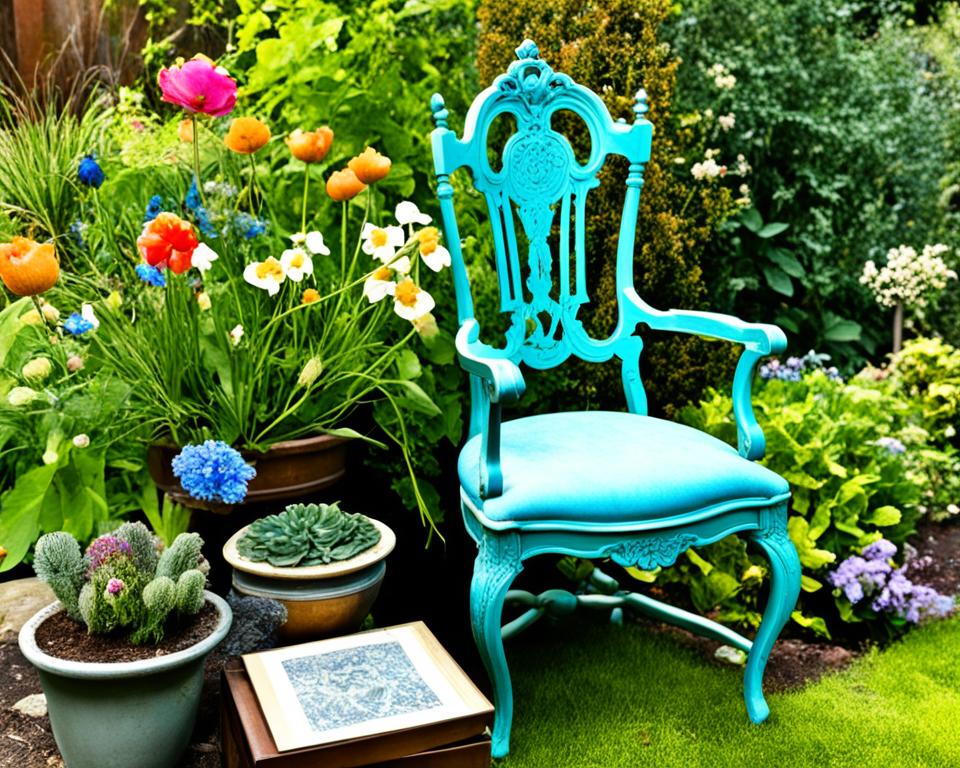
| Options | Pros | Cons |
|---|---|---|
| Keeping for Decorative Purposes | – Preserves sentimental value – Enhances home decor |
– Requires proper maintenance – Limited utility |
| Insuring the Piece | – Financial protection – Peace of mind |
– Cost of insurance premiums – Policy terms and conditions |
| Selling Through Online Platforms or Auction Houses | – Potential for profit – Wide market exposure |
– Time-consuming process – Auction fees or platform commissions |
| Donating or Storing the Furniture | – Support for a charitable cause – Preservation of history |
– Loss of ownership – Storage space requirements |
Consider these options carefully, taking into account your personal preferences, financial goals, and the significance of the antique furniture in your life. Each choice carries its own benefits and considerations, allowing you to make an informed decision based on your unique circumstances.
Unveiling the Beauty: Exploring Vintage Furniture
Vintage furniture holds an undeniable appeal with its timeless designs, exquisite craftsmanship, and rich history. Each piece tells a story of a bygone era and carries a sense of nostalgia. Exploring the different styles, materials, and eras of vintage furniture allows you to appreciate the diversity and individuality it brings to your home.
The Timeless Designs of Vintage Furniture
Vintage furniture is known for its enduring designs that have stood the test of time. From elegant curves to sleek lines, vintage pieces often feature classic silhouettes that seamlessly blend with modern aesthetics. Whether it’s a mid-century modern armchair or a Victorian-style side table, vintage furniture adds a touch of sophistication to any space.
The Exquisite Craftsmanship of Vintage Furniture
One of the defining characteristics of vintage furniture is its exceptional craftsmanship. Skilled artisans of the past dedicated their time and expertise to create furniture that was built to last. Each piece was meticulously crafted using traditional techniques and high-quality materials, showcasing attention to detail and a commitment to excellence. The superior craftsmanship of vintage furniture ensures its durability and enhances its value as a lasting investment.
The Rich History of Vintage Furniture
Every piece of vintage furniture has a unique history that adds to its allure. From heirlooms passed down through generations to discoveries in antique markets, each item carries a story of its own. Vintage furniture allows you to connect with the past and to appreciate the journey it has traveled over the years. Whether it’s an intricately carved desk or a beautifully upholstered sofa, vintage furniture brings a sense of heritage and character to your living space.
By incorporating vintage furniture into your home, you not only infuse it with style and elegance, but also become part of a legacy that spans decades. The appeal of vintage furniture lies in its timeless designs, exquisite craftsmanship, and rich history. It is a reflection of a bygone era and a celebration of the artistry and beauty of the past.
| Benefits of Vintage Furniture | Examples |
|---|---|
| Timeless designs that never go out of style | – Mid-century modern armchair – Victorian-style side table |
| Exceptional craftsmanship for durability and quality | – Intricately carved desk – Beautifully upholstered sofa |
| Rich history and unique stories behind each piece | – Heirlooms passed down through generations – Discoveries in antique markets |
Inspecting Vintage Furniture: Techniques for a Confident Purchase
When considering the purchase of vintage furniture, it is important to thoroughly inspect the piece before making a decision. By applying specific techniques, you can assess the condition, authenticity, style, era, craftsmanship, repairs, and restorations, as well as consider the price and value in the market.
- Assess Furniture Condition: Carefully examine the vintage furniture for any signs of wear, damage, or structural issues. Look for scratches, dents, loose joints, or missing parts. Pay attention to the overall stability and functionality of the piece.
- Check Authenticity and Provenance: Verify the authenticity of the vintage furniture by checking for any hallmarks, labels, or maker’s marks. Research the provenance or origin of the piece to assess its historical significance and authenticity.
- Research Style and Era: Explore the style and era of the vintage furniture to gain insights into its design influences and historical context. Look for distinctive features, materials, and design elements that are characteristic of a particular style or period.
- Evaluate Craftsmanship: Pay close attention to the quality of craftsmanship exhibited in the vintage furniture. Look for fine detailing, precise joinery, and skillful construction techniques. Examine the materials used, such as solid wood, authentic upholstery, or hand-carved elements.
- Uncovering Repairs and Restorations: Check for any repairs or restorations that may have been done to the vintage furniture. Look for signs of refinishing, replaced hardware, or reupholstery. Understanding the extent of repair work can affect the value and authenticity of the piece.
- Considering Price and Value: Assess the price and value of the vintage furniture in relation to its condition, rarity, historical significance, and market demand. Compare prices of similar items to determine a fair value for the piece.
By diligently inspecting vintage furniture using these techniques, you can make an informed decision and confidently purchase a piece that meets your aesthetic and investment requirements.
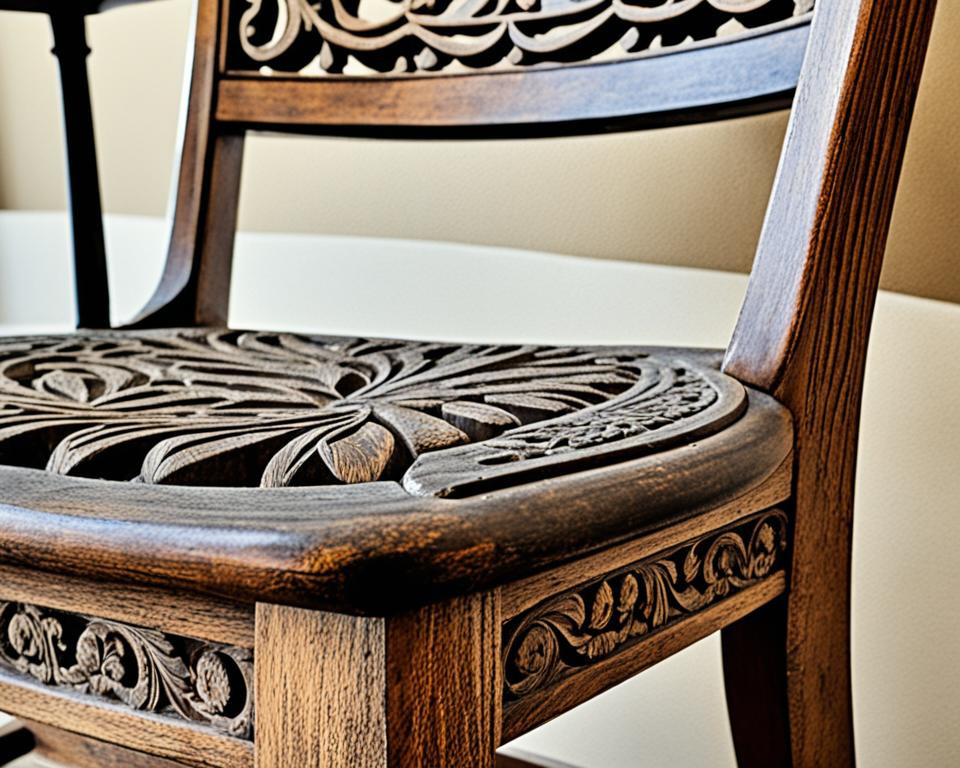
Continue reading to discover the various options you have after appraising the value of your vintage item.
Conclusion
Vintage furniture shopping is a rewarding experience that allows you to discover unique pieces that add character and individuality to your home. By choosing vintage furniture, you not only acquire beautifully crafted items but also enjoy the benefits of cost-effectiveness and environmental advantages. Unlike mass-produced furniture, vintage pieces are made with quality materials and superior craftsmanship, ensuring their longevity and durability.
In addition to their inherent charm, vintage furniture offers numerous environmental advantages. By opting for pre-owned items, you contribute to reducing waste and the carbon footprint associated with manufacturing new furniture. Vintage pieces have already stood the test of time, proving their resilience and sustainability in our throwaway culture.
When it comes to trends in vintage furniture, custom pieces and unique designs are in high demand. Dark wood finishes and earth tones are especially popular, adding warmth and sophistication to any space. Mixing vintage furniture with contemporary designs creates a captivating juxtaposition that reflects your personal style and creates a one-of-a-kind ambiance in your home.
If you’re looking to embark on a vintage furniture shopping adventure, Hunt Vintage is the perfect online marketplace to explore. With a wide range of carefully curated options, you’re sure to find the perfect vintage piece that speaks to your style and preferences. Start your vintage furniture journey today and transform your space with timeless elegance and individuality.
FAQ
How can I determine the value of antique furniture?
To determine the value of antique furniture, you can examine the furniture, identify the type of wood, avoid handling it improperly, understand the types of antique furniture values, research vintage furniture values, and consider getting the furniture appraised.
What should I look for when examining vintage furniture?
When examining vintage furniture, you should look for distinctive features, check for labels or markings, and note any damages or repairs. Consider the seating capacity, storage, and material composition that give the furniture a vintage look.
How can I identify the type of wood used in antique furniture?
To identify the type of wood used in antique furniture, look for clues about its age and value. Native timbers like beech, elm, yew, and ash are common in vintage furniture, while fruitwoods like apple and cherry also indicate an antique item. Specific eras used certain types of woods, such as oak in the 16th and 17th centuries, walnut, mahogany, and satinwood in later eras.
Why is it important to avoid handling antique furniture before knowing its value?
Handling antique furniture improperly can decrease its value. It is essential to avoid cleaning or repairing without understanding its worth. To prevent damage, consult a reliable appraiser or antique dealer for guidance on cleaning, repairing, and restoring antique furniture.
What are the different types of antique furniture values?
The different types of antique furniture values include fair market value, retail value, wholesale value, and auction value. Fair market value is the highest price a buyer is willing to pay and is used for trade and insurance appraisals. Retailers usually offer wholesale value, which is lower than the retail value. Auction value is determined by auctions, commonly used for estate liquidations and tax purposes.
How can I research vintage furniture values?
To research vintage furniture values, you can utilize online resources and books to gain information and guidelines. Comparing prices of similar vintage furniture can provide valuable insights into the market value of your furniture.
Should I get my vintage furniture appraised?
If you have doubts about the value of your antique furniture, getting it appraised by a professional is crucial. Choose a qualified appraiser who specializes in vintage furniture and ask for references. Obtain a written appraisal with a clear statement of value. Keep in mind that professional appraisers can be expensive.
What should I do with my appraised vintage furniture?
After receiving the appraisal results, you have several options. You can keep the antique furniture as a decorative piece, insuring it based on its value. Selling it through online platforms, auction houses, or consignment stores is another option. If the piece doesn’t fit your lifestyle, you can choose to donate or store it.
What makes vintage furniture unique?
Vintage furniture carries a unique appeal with its timeless designs, exquisite craftsmanship, and rich history. Exploring different styles, materials, and eras of vintage furniture allows you to appreciate the diversity and individuality it brings to your home.
What techniques can I use to inspect vintage furniture?
Techniques for inspecting vintage furniture include assessing its condition for wear and damage, verifying its authenticity and provenance, researching its style and era, evaluating its craftsmanship and materials, checking for repairs and restorations, and considering its price and value in relation to the market.
What are the benefits of vintage furniture shopping?
Vintage furniture shopping offers unique pieces that add character and individuality to your home. It is cost-effective, well-made, and has a lower environmental impact compared to mass-produced furniture. The top trends in vintage furniture include custom pieces, dark wood, earth tones, and mixing vintage with contemporary designs. Hunt Vintage is a great online marketplace for finding a wide range of vintage furniture.

